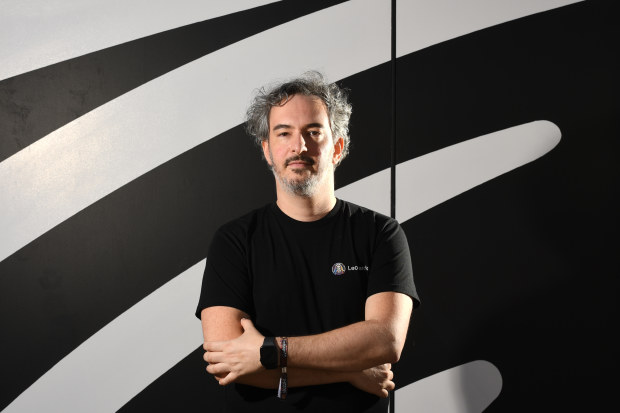Australian AI image champion raises $47m

The Australian image generation start-up Leonardo Ai has raised $US31 million ($47 million) from investors in two tranches as it races to distinguish itself from rivals working from similar technology foundations.
Leonardo lets users generate images online with text prompts, train its software on new visual styles, and last week unveiled a tool to let users edit the results with simple drawings in real time. Placing a red dot atop an image of a wizard’s staff might trigger Leonardo to add a ruby to the image, for example.

Leonardo co-founder J.J. Fiasson leads Australia’s most prominent pure-play artificial intelligence company. Peter Rae
The Australian Financial Review revealed in October that Leonardo, based in North Sydney, had enjoyed explosive user growth, now sitting at more than 7 million, along with competition from venture capitalists to invest.
But many of the tools that it offers are built on open-source technology and research that other firms are commercialising, sparking fears that its offerings could become commodified. It also faces high drop-off rates from users and the cost of running its AI models in the cloud, which can be expensive.
Leonardo co-founder and chief executive, J.J. Fiasson said he was comfortable with the rate of users leaving, known as “churn”, and expected it to improve as the one-year-old company builds more tools for businesses. That will include the ability to work with 3D images and videos.
“Moving really, really fast I think is really key,” Mr Fiasson said.
The investor money will help Leonardo, which is hiring rapidly, do that. Among its new staff are two senior women, chief of staff Donna Thomas and HR head Ellie Miller. Its workforce is overwhelmingly male.
A spokeswoman for Leonardo said the investment spanned two rounds, a $US7.5 million seed round and a $US23.5 million series A. The company declined to disclose its valuation, though one source familiar with the company put it at about $US80 million after the investment.
The round was led by Australia’s Blackbird Ventures with a smaller Australian fund, Side Stage, also putting in cash. Smash Capital, which is a US firm run by several ex-Disney staff, invested too alongside the Beijing-based Gaorong Capital and a handful of other firms.
Mr Fiasson said Leonardo was constantly improving its artificial intelligence tools and reducing their computing demands.
“You train an [AI] model on a model,” Mr Fiasson said. “And then you essentially teach another model to be able to do what that model does in less steps. So you go from 20 steps to four steps to one step.”
Leonardo’s revenue covered its bill for Amazon’s web services, where it runs its AI tools, Mr Fiasson said.
University of NSW artificial intelligence professor Toby Walsh said he was pleased that Leonardo was doing well but forecast it would need to be acquired by a major technology company to succeed.
“These are expensive tools to run … so you need someone who’s got those sorts of resources,” Professor Walsh said. “And secondly, you want it in your tool chain. You want it embedded into your Google Docs or into your Canva tools. You don’t really want a standalone thing. It slows down your efficiency, and that’s one of the things it’s supposed to be buying you.”
In addition, Professor Walsh said, there were legal risks to a host of artificial intelligence models from cases underway in the United States alleging that they breached copyright law. None of those specifically target Leonardo but could have implications for it.
Leonardo investor Ben Grabiner of Side Stage Ventures said there was no “silver bullet” that distinguished any software business from its competitors. But, he said, Leonardo’s products were remarkably powerful, found many customers and were rapidly being improved.
“The speed at which they ship product creates an amount of defensibility,” Mr Grabiner said.
Introducing your Newsfeed
Follow the topics, people and companies that matter to you.
Find out moreRead More
Latest In Technology
Fetching latest articles